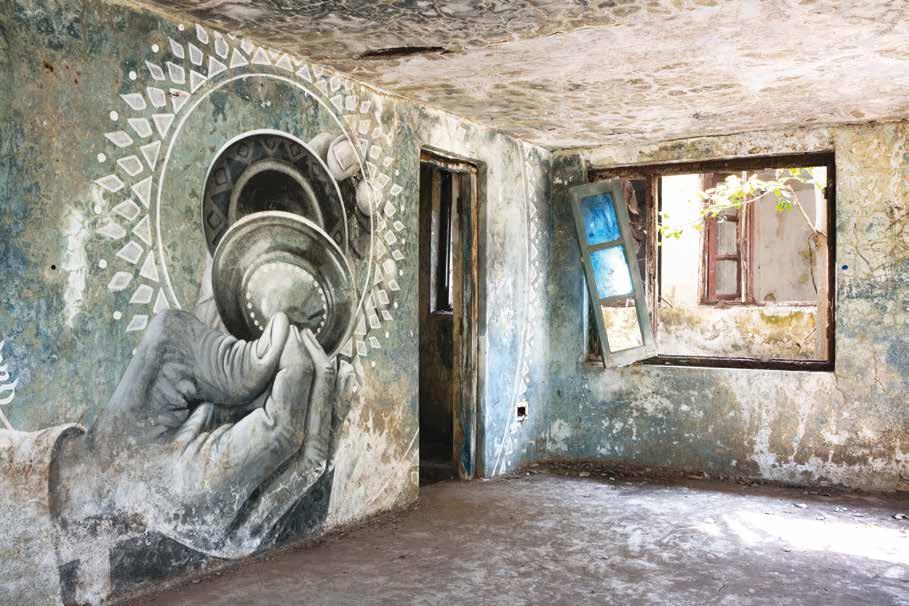

 DAVID ZURICK
DAVID ZURICK



 DAVID ZURICK
DAVID ZURICK
FOREWORD BY PICO IYER
It was 1975. I was sitting in a back-alley café in Istanbul on my way to India, drinking a cup of strong Turkish coffee and reading a book, when a disheveled-looking couple entered the building and took seats at a nearby table. They showed me a stapled typescript with a pale blue cardboard cover, a guide to help travelers navigate the journey from Europe to Australia. The 94-page pamphlet was entitled “Across Asia on the Cheap.”
It was the first volume in what was to become the eponymous Lonely Planet guidebook series. At the time, a growing number of young westerners were traveling to Asia in search of adventure and life experiences. I was one of them. Not a few of us were also engaged in a spiritual inquiry. We followed a circuitous route that led from Amsterdam to Kathmandu. Over time, the overland journey became known as the Hippie Trail. It was as much a way of being as a traveler’s path across Asia.
Prominent among its stopovers were a handful of destinations in India—Pushkar in the Thar Desert, the Hampi ruins, Rishikesh on the banks of the Ganges, Goa on the Arabian Sea coast, and the Parvati Valley located in the Himalayan mountains. Fifty years on and these places continue to attract counterculture visitors from around the world. While the old Hippie Trail across Iran and Afghanistan no longer exists, having succumbed to war and
revolution, the kind of traveling it fostered back in the 1970s continues to inspire young sojourners in India today.
But that’s not the whole story. Several generations of Indians have grown up in these places since they first appeared on the Hippie Trail, and just as travelers from the West have absorbed experiences and material culture, even wisdom, from their Indian hosts, so, too, have many of the local residents learned a thing or two from their hippie guests. An intermingling has occurred, in which ideas and lifeways are exchanged as freely as costumes, music, and hairstyles. People’s lives are transformed on both sides of the cultural divide, places change, and the gap between East and West is narrowed.
These remarkable settings and the free-spirited people who visit or reside in them—Westerners and Indians, alike—are the subjects of this book.

O you temples fairer than lilies, pour’d over by the rising sun!
O you fables, spurning the known, eluding the hold of the unknown, mounting to heaven!
—Walt Whitman, from A Passage to India
One of the few regrets I have in life, as I pass through my sixties, is that I was born just a few years too late to partake of the transformative revolutions of the Summer of Love as it first spread across the world. The Magic Bus, the Pudding Shop in Istanbul, Chicken Street in Afghanistan: I inhaled such names, passed down in an oral tradition everywhere from Santa Cruz to Lhasa, and felt like someone sorting through the broken bottles and debris of a global party on the morning after.
But the beauty of the Hippie Trail, as suggested by David Zurick’s fond and aromatic photographs, is that its legacy lives on, and not just in the older folks among us, but in all the places that it made new and old. Anyone who has savored chai in the backstreets of Varanasi, or sat on a rooftop in Manali discussing Herman Hesse, anyone who has made her way to one of the ashrams still encircling Rishikesh or been handed down his father’s (or grandfather’s) Grateful Dead tie-dyed t-shirt, originally swapped for a transistor radio in a truck somewhere along the Khyber Pass, knows that the truest things never die.
By the time I made it to Pushkar, in 1985, the fumes around the tribal scene were not so different from the ones recorded here; McDonald’s and gleaming shopping malls may have come to India, but anyone who arrives there tomorrow will find the same intensity, warmth, overwhelming explosion of color and mystery, and chatter that her great-aunt saw in
1975. Indeed, even someone who has never left Santa Monica or Frankfurt may realize, as she heads from her yoga studio to the local Tibetan restaurant and then relaxes over that new translation of Rumi, that the ’60s weren’t just a flash of lightning, but really threw open the doors to a constant cultural and spiritual traffic between East and West that continues, often deepens, to this day.
I write this in a Californian small town filled with dharma centers and Ayurveda clinics, where blonde young women are as often as not called Ananda and Maya; my editors at Time magazine knew all about karma and Nirvana long before they put yoga on their cover. The Hippie Trail marked the planetary explosion of a revolution that changed the assumptions of us all, from Bondi Beach to Oslo; my cousins in India started thinking that maybe Big Sur or Woodstock were places worthy of a pilgrimage, even as others of us made the trek to Hampi and Kasol.
The images in this book speak for traditions now as entrenched as many of the nomad circuits and festival gatherings of old: I run into Tony and Maureen Wheeler on many continents and the books they initiated remain my Bibles everywhere from Antarctica to Zanzibar; the barter economy that came to light among harem pants and Kashmiri scarves is now a universal reality as people share apartments, couches, rides. In truth, as is mentioned in the text, sadhus and travelers along the gypsy trail so merge
in their ashes and dreadlocks that often it becomes impossible to separate East from West.
The first time I made it to Goa was 2018, fifty years after the Summer of Love, but as my Japanese wife and I sought out her yoga teacher from Dharamsala near Arambol Beach, we came across women from Scandinavia doing sun salutations on the sand while an almost-naked Frenchman was standing on his head. One earnest soul was seated cross-legged on the beach, deep in a worn copy of Siddhartha, and a young woman was pushing a pram past the Forgotten Land Café (with The Last Monk store next door).
To make the trip from Hippie Island to the ChillOut Café with David Zurick, to encounter travelers from Kathmandu and Russia (a long way from the oligarchs who fill Goa’s five-star hotels at Christmas), is not just to awaken memories, but to see how we live right now. The Beatles Ashram may be peeling, but it’s a magnet for every new generation of seekers. Places with their origins in ancient Indian mythology are home these days to a more recent kind of mythmaking that mingles New Age trends with old-soul truths. Jimi Hendrix gazes right at you in the Buddha Café. It’s hard not to feel that this book is an evocative record of our future as much as of a savory, and powerfully enduring, past.
Pico Iyer is the author of 16 books, translated into 23 languages, including Video Night in Kathmandu , The Open Road , The Art of Stillness and, most recently, The Half Known Life .


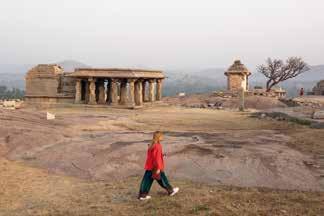


THIS PAGE: Overlooking the main bazaar in Hampi is Hemakuta Hill, where Lord Shiva purportedly once reigned. The hilltop is sprinkled with enormous boulders and old temples. At the top of the hill are stone platforms that provide wonderful sunset views. Each evening the hill swarms with young travelers who climb up from the bazaar to take in the scenery, the peace, and the quiet. Here I met Patrick from New Zealand. He related to me that he’d come to Hampi to “experience the serendipity, the magical occurrences of chance that happen so frequently in India.”
I thought I knew what he meant; I’ve been returning to India regularly during the past 50 years for much the same reason.
OPPOSITE: Hemakuta Hill


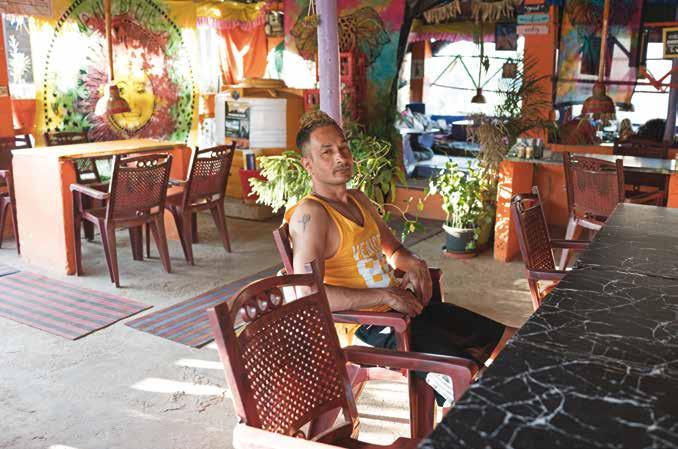
ABOVE: It was mid-afternoon and getting hot, so I popped into the “Chill Out” café for a cold drink. There I met Pamir from Kathmandu. As we chatted, he related to me, “I come down here to India in the winters to escape the cold at home in Nepal. I like the vibe in Hampi.” I discovered time and again that counterculture travel is not restricted to persons coming
from what I considered to be the “Western World.” I met free spirited people hailing from countries located throughout Asia and Latin America. Among other shared attributes, they all expressed a similar desire to escape the conventions of their own societies. The term hippie defies any easy explanation or a place of origin.




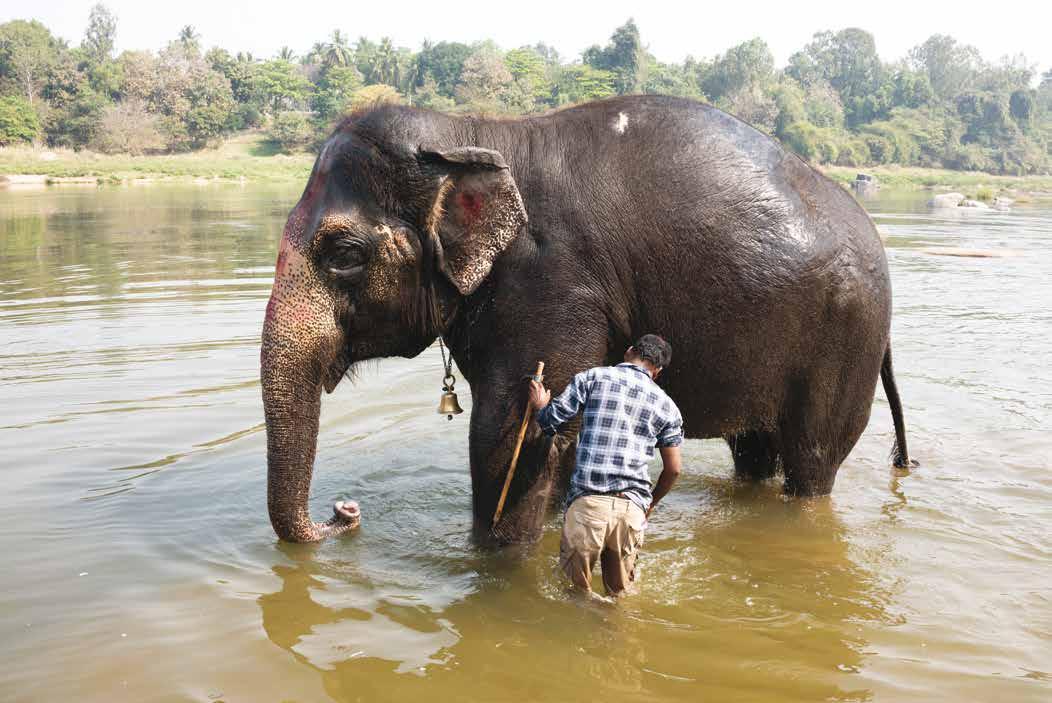


ABOVE: Costa (Germany). A young man smiled and nodded when I entered the “Hare Krishna Café.” We began a conversation. Costa told me he’d just spent a month in an ashram and was waiting for his partner, Siri, to return from an outing in the bazaar. He was an engineer in Germany, but his time in India changed all that. “My outlook on life is different now,” he admitted.
“When I return to Germany, Siri and I will open a coffee shop and a bookstore specializing in spiritual subjects.” I smiled, thinking about his namesake— Costa Coffee, the second largest coffeehouse chain in the world, and wished him well. We never met again, but I sometimes find myself thinking about Costa and wondering whether his plans for a coffee shop and bookstore in Berlin ever came into fruition.





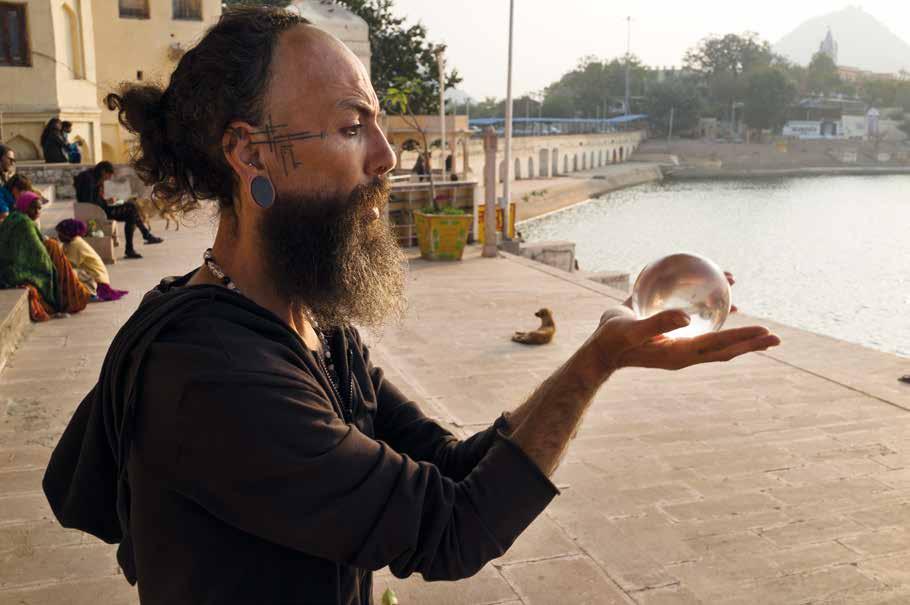


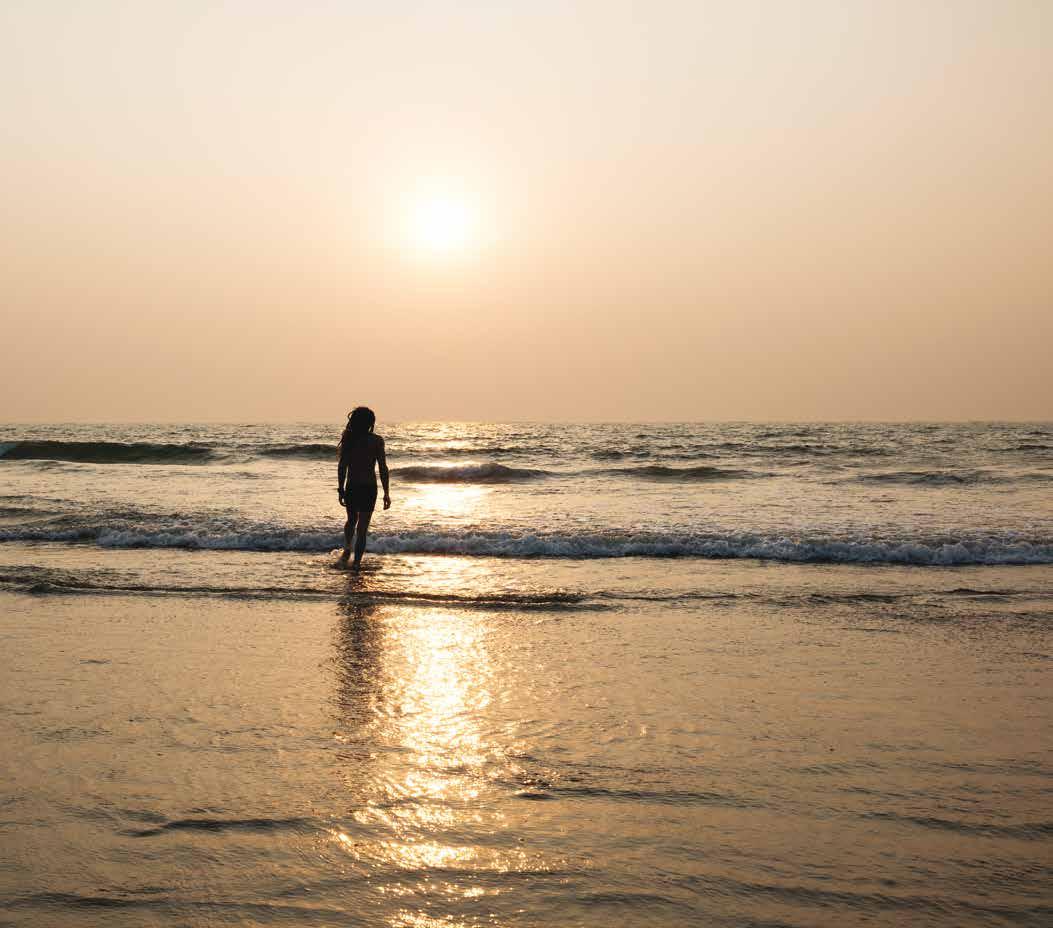
Ifirst heard about Eight Finger Eddie (aka Yertward Mazamanian) in 1980 while I was hanging out in Kathmandu. A large number of western expats living in Nepal at the time fled to India during the winter months and he was the person most responsible for the seasonal exodus to sunny Goa.
An overland journey on the Hippie Trail in the 1960s had taken Eight Finger Eddie to India. He eventually landed in the southern state of Goa and lived there for much of his life, until his death in 2010. In a self-published memoir, he wrote: “I was the first freak in Goa. I turned up and liked it so much, I just wanted to stay.” And so he did. Eight Finger Eddie resided in a small bungalow in Goa for 44 years, running a soup kitchen for destitute western travelers, setting up the Anjuna Flea Market where hippies could barter their unwanted possessions, feeding and sheltering flipped-out travelers who had nowhere else to go. His exploits earned him the nickname “King of Hippies” and put Goa prominently on the counterculture travelers’ map of India.
A lot has changed in Goa since Eight Finger Eddie’s bohemian days. National Geographic recently ranked it number six in its list of top ten nightlife destinations in the world. The hashish and guitars around a beach bonfire days have morphed into full moon rave parties fueled by ecstasy and trance music. Eddie’s original flea market is now a bustling retail center. The beach shacks gave way decades ago to holiday
resorts where water sports, club-hopping, and selfies dominate tourism activities. Goa’s sand, sun, and warm water continue to attract people, but most now arrive as domestic visitors from elsewhere in India.
Certain aspects of Goa still hold appeal for Western counterculture travelers. It is noticeably different from other parts of India. From 1510 until its annexation in 1961, Goa was a Portuguese colony that fused European and Indian cultural influences. The neighborhood where I stayed in old Goa was filled with pastel-colored homes, cafés, and churches that would’ve looked right at home on any street in Lisbon. Many of the western travelers I met came from colder climes. The tropical weather of south India made them want to linger. And while the coastline no longer harbors the pristine traditional fishing villages of the past, Goa sits on the Arabian Sea and for many travelers that is reason enough to visit.
In keeping with its hippie roots, a new-age spirituality has taken hold in much of Goa. Yoga studios, ayurvedic massage, reiki, and healing resorts abound along the coast. Many of them are chic and stylish affairs, catering to a prosperous clientele, while others, reminiscent of the hippie heyday, may be little more than a thatched yoga shack stuck in the sand. Along the northern coastline, Arambol is among the last of Goa’s hippie holdouts. The town remains free of the kind of high-rise developments that populate the beach elsewhere, while its multitude of hostels, cafés, and drum circles manifest the spirit of the counterculture past.
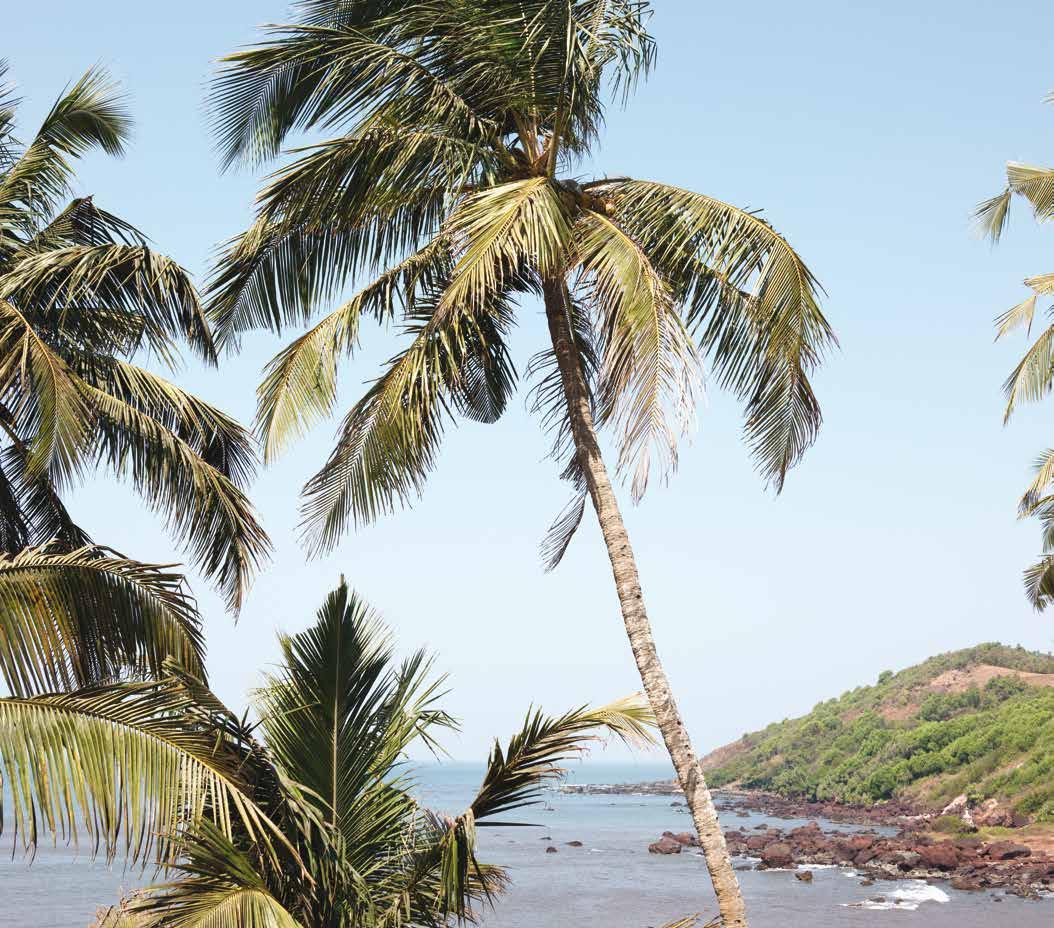
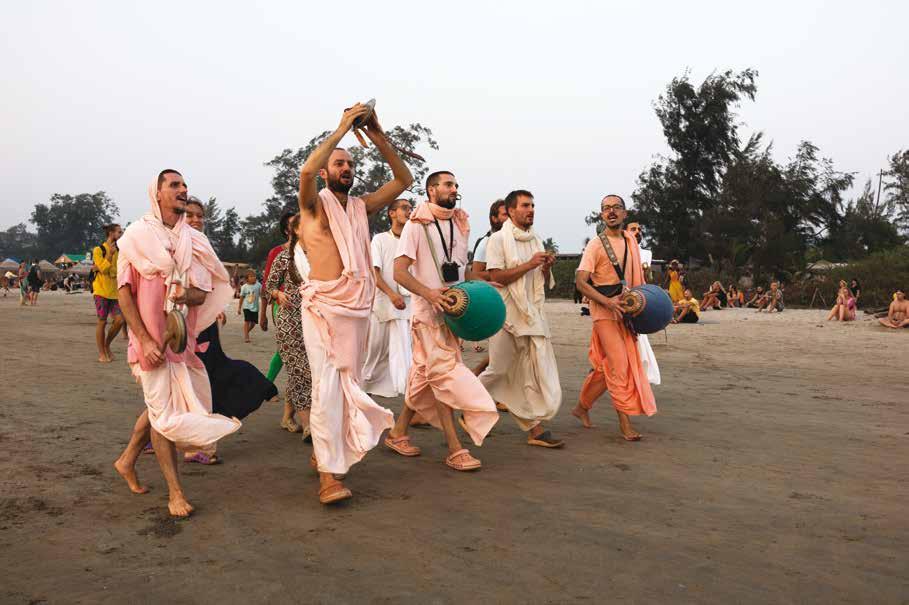


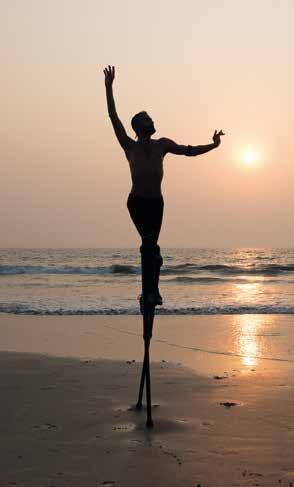

Alona (Russia). I met goldilocks Alona one morning after she’d spent the dawn hours out in the ocean, sardine fishing with her boyfriend Scott and a local fisherfolk family. Scott (Australia) had been living in Goa for the past six years. Alona joined him for a month each winter to, in her words, “chill in a place with spiritual vibes.” When I asked Scott how the day was going, he replied, “this morning out on the boat I saw the best sunrise of my life—and I’m from the Australian coast, mate!


ABOVE: I was seated on a rocky ledge above the Ganges River, a short walk from the tourist hub of Rishikesh. It was early morning, the air was cool, and the sun had just risen over a mountain ridge. The noise of the rushing rapids drowned out other sounds. I was mesmerized by the water and had lost any sense of the passing
of time. I thought I was alone when a local man in rags suddenly appeared at my side. I had no idea where he came from. He could’ve been a pilgrim or a bum. In Hindi, the man asked me: “Are you having a mystical experience?” He turned and walked away without waiting for an answer.


Pierre Reyniers (1948–2019) is one of the unsung heroes of the Hippie Trail. He left France in 1969 on a spiritual journey to India and was so moved by what he found that he spent the next five decades in the Himalayan foothills, dedicating his life to serving local people who had contracted leprosy (Hanson’s disease). His efforts were not in vain. He helped establish a number of self-sufficient farms and residential colonies where lepers could live and work without the stigma of society. Many of the children raised and educated in these places have gone on to become professional persons working throughout the world. Mr. Reyniers was cremated in Rishikesh and his ashes strewn into the Ganges River.

